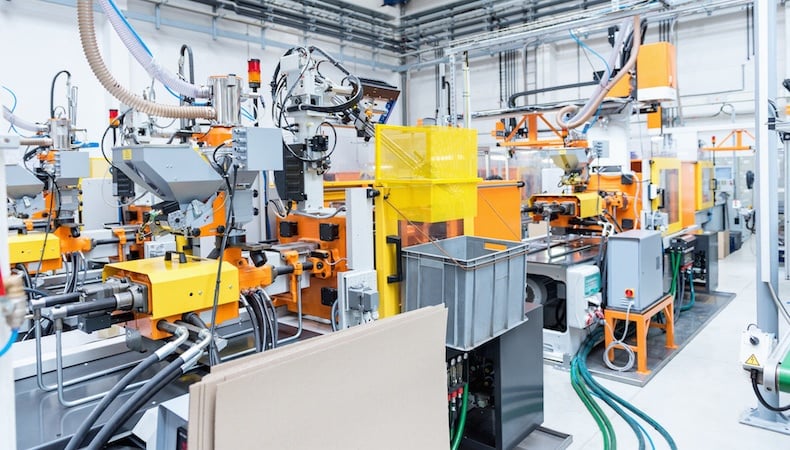The Future of Plastic Shot Molding: Patterns and Developments to Enjoy
As the plastic shot molding industry develops, numerous essential patterns are arising that guarantee to improve its landscape. Automation and clever production techniques are set to enhance efficiency, while the change in the direction of sustainable products reflects an expanding environmental awareness.
Automation and Smart Manufacturing
As the plastic shot molding market advances, automation and clever production are taking center stage, revolutionizing production procedures - Plastic Injection Molding. The assimilation of advanced technologies such as robotics, IoT (Net of Things), and expert system is allowing makers to boost effectiveness, minimize operational expenses, and enhance item top quality. Automated systems simplify operations, minimizing manual intervention and boosting throughput, which is crucial in satisfying the increasing demand for quick manufacturing cycles
Smart making innovations help with real-time surveillance and data analysis, allowing business to optimize machine performance and anticipate upkeep demands. This aggressive method not just decreases downtime however also prolongs the life expectancy of tools. In addition, making use of collaborative robotics, or cobots, boosts the adaptability of production lines, making it possible for employees and makers to run side-by-side securely and effectively.
The fostering of automation in plastic shot molding is not just a fad but a tactical critical for businesses aiming to remain affordable in a worldwide market. By taking advantage of these modern technologies, producers can achieve greater precision, lower waste, and adapt quickly to altering client needs, positioning themselves for sustainable growth in an increasingly automatic future.
Lasting Products and Practices
The push in the direction of automation and clever production has actually led the way for a greater emphasis on sustainable materials and methods within the plastic shot molding market. Companies are increasingly looking for environmentally friendly options to standard petroleum-based plastics, causing the adoption of recycled and bio-based products. These lasting materials not only decrease environmental influence but additionally straighten with customer need for greener products.
Moreover, partnership between producers, product distributors, and ecological companies is cultivating technology in the growth of sustainable products that fulfill efficiency criteria without endangering quality. As regulations around plastic usage end up being stricter, the industry is positioned to adapt by embracing these sustainable methods, making sure long-term practicality and lowering reliance on non-renewable resources. The combination of sustainability right into plastic shot molding is not merely a fad; it is ending up being a vital part of company responsibility and operational excellence.
Breakthroughs in 3D Printing
Recent developments in 3D printing innovation are substantially transforming the landscape of plastic shot molding. Once difficult or impossible to achieve with standard methods, the integration of additive manufacturing procedures enables for the fast prototyping of complicated geometries that were. This capacity not only accelerates item development cycles yet likewise decreases product waste, straightening with the expanding need for lasting manufacturing methods
In addition, the appearance of hybrid manufacturing strategies, which integrate 3D printing and injection molding, offers manufacturers the capability to develop elaborate layouts while preserving the effectiveness of mass manufacturing. This strategy allows the manufacturing of tailored components tailored to certain consumer requirements without sacrificing the rate and scalability that injection molding gives.
Furthermore, advancements in products, such as high-performance polymers and composites particularly developed for 3D printing, are improving the functional abilities of printed parts. These materials can stand up to better stress and anxiety and show enhanced thermal homes, making them suitable for more requiring applications.
As 3D printing continues to evolve, its assimilation right into plastic injection molding procedures guarantees to enhance performance, decrease expenses, and foster technology in item design, placing makers to better fulfill the difficulties of an open market.
Data Analytics and IoT Combination
Information analytics and the assimilation of the Internet of Things (IoT) are transforming plastic injection molding by offering makers with unmatched insights into their procedures. By leveraging real-time information gathered from interconnected machines and sensors, makers can keep an eye on performance metrics, recognize inefficiencies, and optimize production processes. This data-driven technique helps with predictive maintenance, decreasing downtime and prolonging tools life-span.
Moreover, IoT combination permits boosted quality control. By continuously tracking variables such as cycle, temperature level, and stress times, suppliers can swiftly detect variances from developed criteria and make modifications in real time. This not just boosts item uniformity yet also minimizes waste and scrap rates.
The fusion of information analytics and IoT technologies likewise empowers manufacturers to embrace more dexterous production approaches. With accessibility to thorough data analytics, companies can respond to market demands with higher flexibility, readjusting production schedules and setups my site as required. This versatility is essential in a swiftly altering manufacturing landscape.
Customization and Layout Flexibility
Exactly how can modification and design versatility boost the competition of plastic shot molding? Modification allows makers to fulfill particular customer needs, suiting unique measurements, shapes, and capabilities that standard items might not satisfy.
Innovations in design innovations, such as computer-aided layout (CAD) and quick prototyping, additional bolster this fad. These devices make it possible for developers to create detailed patterns and complicated geometries, which can be effortlessly incorporated into the production process. Consequently, suppliers can react promptly to transforming consumer preferences and market needs.
Furthermore, the application of modular tooling systems boosts style flexibility, enabling quicker adjustments in between various item designs without comprehensive downtime. This flexibility can lead to decreased preparations and reduced production costs, making companies much more competitive and active. Ultimately, embracing modification and style adaptability in plastic injection molding not only elevates product offerings yet additionally strengthens market positioning in an ever-evolving landscape.
Conclusion
The future of plastic shot molding browse around this web-site is identified by considerable innovations in automation, lasting practices, and cutting-edge materials. Personalization with modular tooling and rapid prototyping will certainly allow manufacturers to remain competitive and receptive to the vibrant needs of the market.

The future of plastic shot molding is characterized by considerable improvements in automation, lasting practices, and ingenious products.
Comments on “Plastic Injection Molding: A Comprehensive Guide to Modern Production Techniques”